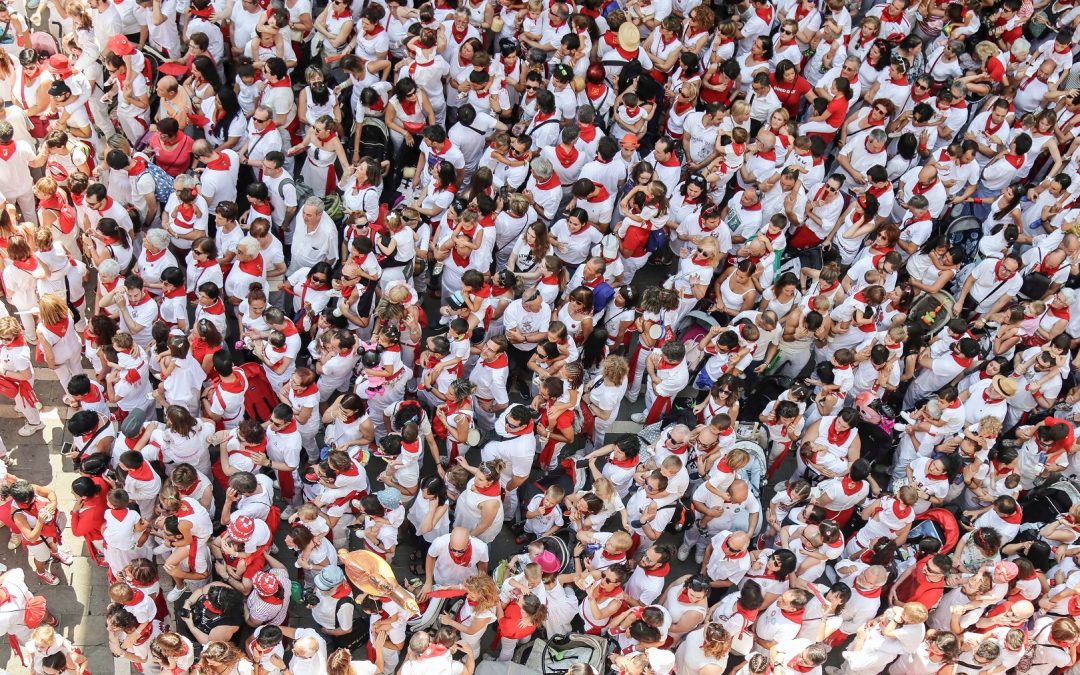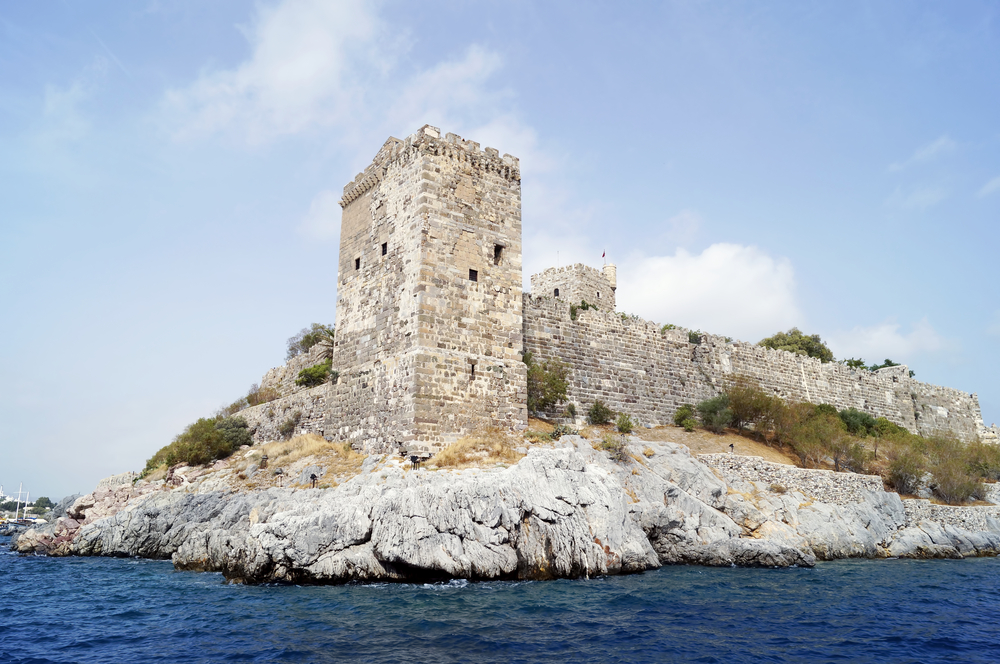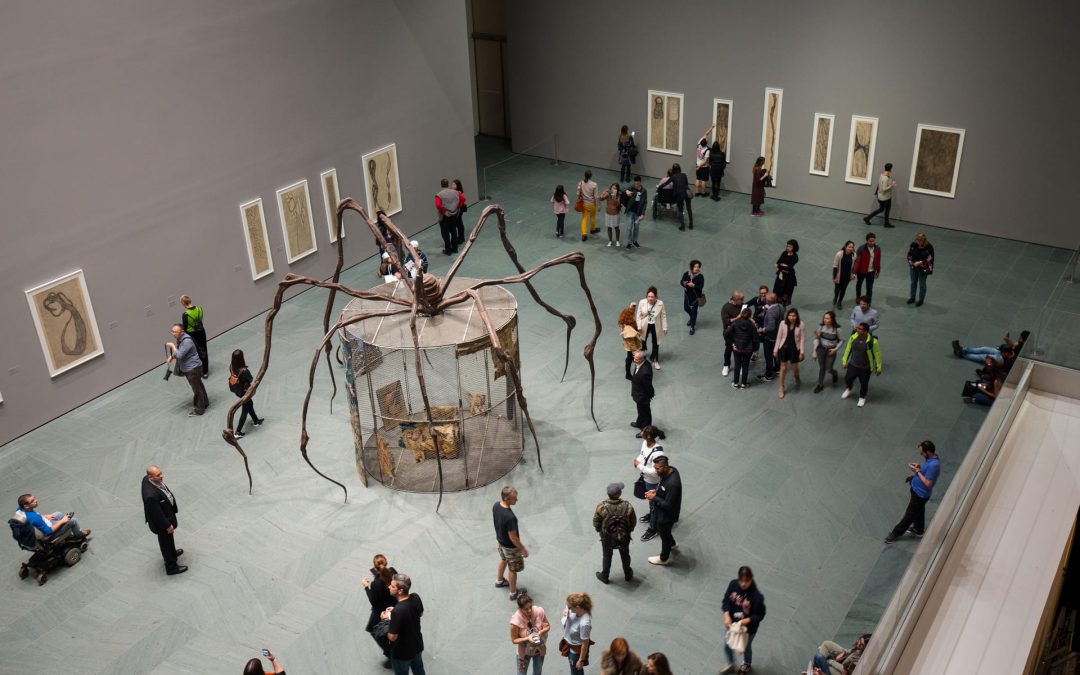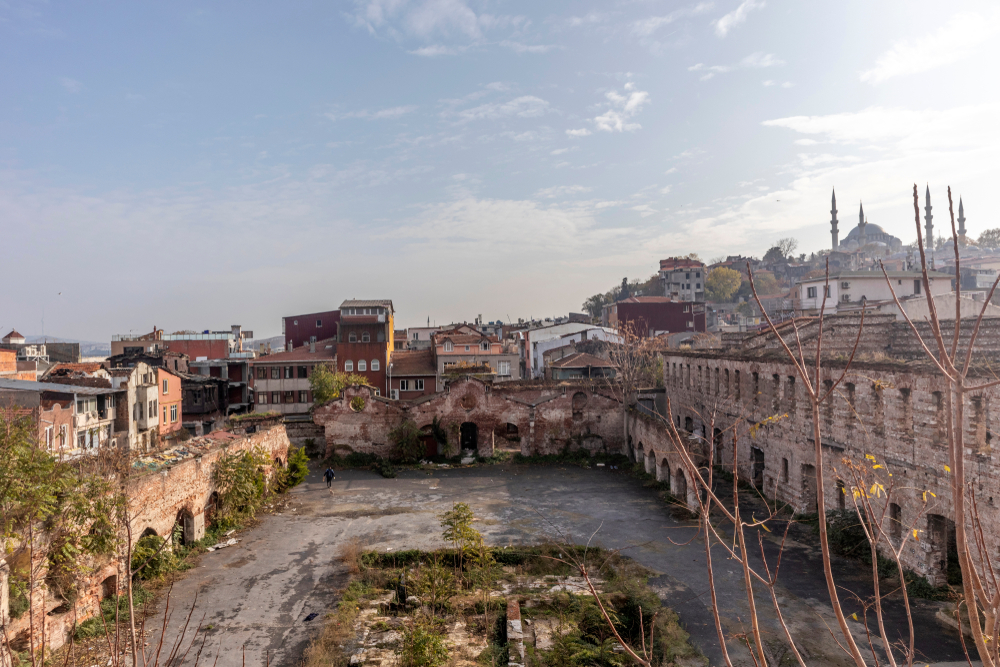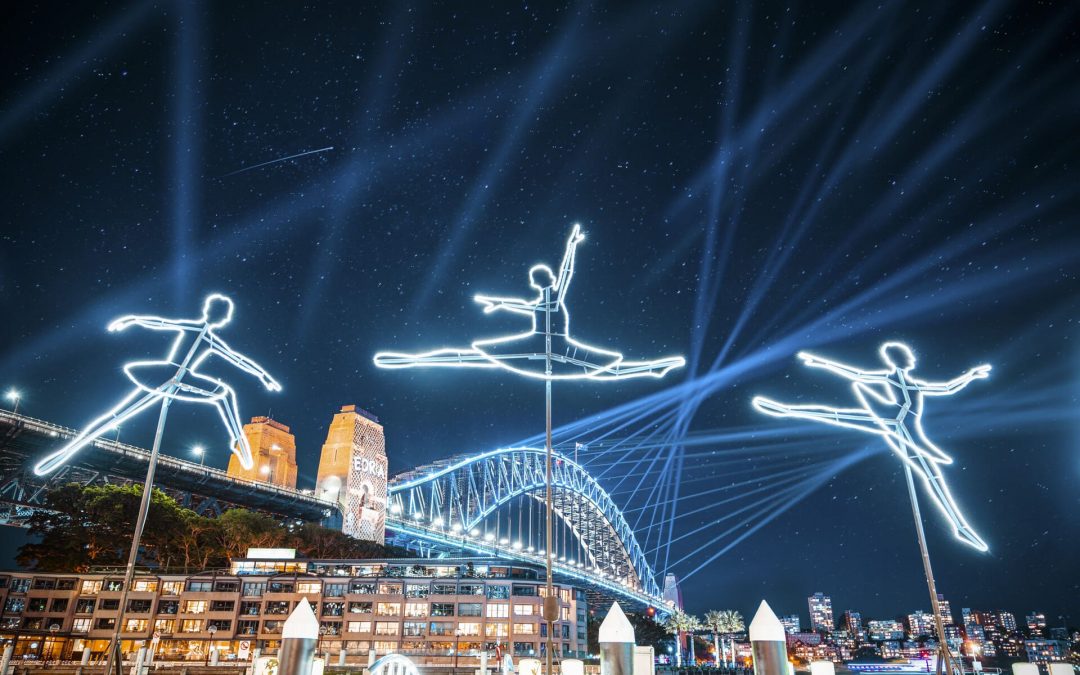
The Vivid Sydney Festival Is Back And Ready To Make A Splash
Vivid Sydney is an annual celebration of light, music, creative ideas and innovations. It is renowned for incredible luminous projections, live music performances and thought-provoking debates and discussions. Australia’s most popular event will descend from Friday 27 May to 18 June. The light show will transform the image of Sydney into an illuminating fusion of creativity, innovation, and technology for 23 days straight, attracting people from different parts of the world just to become a part of this unique, vibrant celebration. Late-night parties, music concerts, open-air sets, supper clubs and a Vivid Dinner — all this and much more is to be awaited from the festival this year.
The Vivid Sydney Festival will run from 27 May to 18 June 2022

An annual Festival of Lights, Music and Ideas returns after a 2-year long hiatus due to the COVID-19 pandemic. If you haven’t heard about this colorful and mind-blowing Australian festival, this article might be just for you, as you are about to discover one of the most entertaining and breathtaking events in Australia. This will make you want to experience it firsthand.
For those who already know what Vivid Sydney is all about, buckle up, cause this year’s program will surely make a splash this Summer. We will highlight the must-see locations and what this event has prepared for Sydney residents and tourists this year.
What Vivid Sydney program offers in 2022?
The return of Vivid Sydney for 2022 will be an unforgettable experience, as the festival’s program promises to bring awe and wonder to tourists and Sydneysiders. It’ll be filled with over 200 events, including 85 intriguing talks and workshops, and over 50 music shows at surprising venues across Sydney. Celebrating its 12th anniversary this year, the festival has never reached this magnitude ever before.
Vivid Sydney tells an interesting story of creativity, innovation, and technology through light, music, and ideas that are distinguishably Sydney yet authentically universal.
The emphasis of the 2022 Vivid Sydney festival is placed on Sydney’s soul and its diversity, beauty, resilience and First Nations culture. This year, the renowned Light Walk has been extended, making it the longest in the history of the event. It now stretches 8km from Opera House to Central Station. The Light Walk is Vivid’s heart and soul, with about 47 installations and projections scattered along the way. Among them, 200 LED sculptural birds as part of the Future Natives installation.
The Vivid Sydney 2022 program is bursting with new events, venues, performances, and experiences, providing even more reasons to visit time and time again. This year, we are celebrating the festival’s 12th anniversary, with a bigger, brighter, and more brilliant lineup than ever before.
A wide variety of artists are contributing to the light displays this year with over 50 different showcases across the city. The Sydney Opera House will be reignited for the Lighting of the Sails light projection, an original artwork that captures the spirit of the iconic landmark, created by a Sydney-based creative technologists group called Curiious.
Apart from that, several other biggest tourist attractions and iconic buildings like The Sydney Harbour Bridge, Museum of Contemporary Art Australia and Customs House will play a key role in this radiant extravaganza. This year, the light show will spread to the south of Sydney, with some new city sights included on the show list, The Goods Line Walk, ASN Clocktower in The Rocks and Central Station.
The key light installation sites
- The Sydney Opera House
- Sydney Harbour Bridge
- Circular Quay
- Customs House
- The Rocks
- Central Station
- Walsh Bay
- Barangaroo
- Darling Harbour
- Darling Square
- Darling Quarter
- Carriageworks
- Taronga Zoo
- Chatswood
The best places to view the Vivid Light show are the Sydney Opera House, The Rocks, Bradfield Park and Darling Harbour, or enjoy the brilliant spectacle from the comfort of a private yacht, which you can book for that purpose at GetBoat. The service will offer you the best prices so you can enjoy the show having the best seats.
Must-see light shows
1. Lighting of the sails
The country’s most iconic building, The Sydney Opera House, will be in the spotlight as expected. This year, a stunning digital artwork Yarrkalpa — Hunting Ground, created by Martumili Artists and Sydney-based creative technologists Curiious, will bring to life the renowned collective painting, originally made collaboratively in 2013 by eight of the Martumili Artists — Australian indigenous people. The artwork represents an intimate connection with the country, paying tribute to the history and culture of the indigenous Parnpajinya community. The Australian indigenous electric music played by The Electric Fields band will be the soundtrack to the marvelous light show.

Where: Sydney Opera House
When: Every night from 6 pm to 11 pm
Ticket cost: Free
2. Our Connected City
This luminous installation will light up the sky with one hundred and fifty searchlight beams across many skyscrapers reflecting the mirror-like waters of Circular Quay. The Sydney Harbour Bridge will be emblazoned with hundreds of colorful lights, coordinated in perfect synchronization.
This visual spectacle will be performed by Australia’s leading entertainment design firm Mandylights, which has worked in over sixty countries on concert, light art, corporate, broadcast and special event projects. This group of designers has created outstanding visual light shows for world-famous artists like Ricky Martin and The Backstreet Boys.

Where: Circular Quay and the Rocks
When: Every night from 6 pm to 11 pm
Ticket cost: Free
3. Sydney Infinity
This is going to be the largest ‘water and light’ show ever seen in Australian history. The installation is created by Oracle Liquid — Australia’s leading creators of water and light theater spectaculars involving fountains, lasers and projections. The team of professionals uses top-notch technologies to create this breathtaking performance that will take this light-water artistry to a whole other level.
“Hundreds of multi-textured jets and nozzles fan water into shifting shapes and expressive fountains,” according to the description of this radiant artwork. It also states that “An impressive array of 48 compressed-air water cannons — that can blast water up to 80 meters into the air — delivers a powerful crescendo of visual wonder and sonic blast-waves guaranteed to rock your senses.”
Over 250 meters of robotic fountains throw nine tonnes of water in the air in one second. Meanwhile, thousands of powerful LEDs light up this water dance.

Where: Darling Harbour
When: Every night
Ticket cost: Free
4. Ephemeral Oceanic
An arty light installation, made by Sydney-based design studio Atelier Sisu, will see 150 gigantic bubble-like spheres floating above the water at Walsh Bay. Each light bubble is made from a transparent material with a color-reflecting dichroic film that reacts to the sunlight.

Where: Walsh Bay
When: Every night from 6 pm to 11 pm
Ticket cost: Fre
5. Frankly My Dear
Created by Aussie artist Sinclair Park, the artwork reacts to the level of the activity of the area by changing its dynamics from a “frenetic pulsing of saturated color during ‘peak hour’ to a more subdued and relaxed feeling as the evening winds down”.

Where: Business School, University of Technology Sydney
When: Every night from 6 pm to 11 pm
Ticket cost: Free
Vivid Music
The light performances will be accompanied by live music, turning Sydney into a big stage for open-air concerts, live shows in unexpected places, and world-famous bands playing in venues no one has played before.
Up to 70 International and local artists will perform for the Festival through May and June, representing a vast variety of music genres and styles, from jazz-funk to post-punk, hip-hop to classical music.
Vivid visitors will get a chance to enjoy exhilarating music shows featuring indie singer Perfume Genius (United States), pop act Chai (Japan), songwriter and multi-instrumentalist Cate Le Bon (Wales) and many others.
Among other Vivid Music highlights are the country’s greatest singer-songwriters, Paul Kelly, who provided the soundtrack to multiple generations. Paul will perform across four nights on the Northern Broadwalk presenting his once-in-a-lifetime show called Time and Tide: Four Decades of Song, which celebrates his 40-year-long career in music.
Sydneysiders and tourists can catch a world premiere of a German producer Nils Frahm and Sampa The Great’s much-anticipated show, An Afro Future. Vivid’s spectacular lineup also has a jazzy improvisational performance by Tangents and GODTET; a fiery set from the all-female indie band The Buoys and Ghanaian-American artist Moses Sumney, who’s bringing his soulful tunes to the Opera House for one night only.
This year’s Vivid LIVE artists reflect the international scale and ambition of Sydney’s soul. From Paul Kelly’s exclusive residency with Thelma Plum, and the incredible impact of Sampa The Great, to the remarkable event, put together by BLESSED.
It’s an honor to be staging the world premiere of Nils Frahm’s new performance, and Hermitude will finally let rip outside on the harbor. Vivid LIVE will herald the Opera House debuts of sublime new artists like Masego, RVGand Miiesha, while we welcome back the mighty Moses Sumney and hand the Opera House over to Sydney’s multifaceted music communities, Astral People, Club Kooky, Mad Racket and many more.
Vivid Ideas
Headlining the Vivid Ideas Program will be Oscar and Emmy award-winning theater and director, screenwriter and playwright Aaron Sorkin. He is best known for films like The Social Network, The Trial of the Chicago 7, Steve Jobs, Molly’s Game and the HBO series, The Newsroom.
Alongside Aaron Sorkin, American broadcast journalist, author and TV personality Gretchen Carlson will also be among the headliners this year, sharing her side of the story that was depicted in the most recent the Bombshell movie, while also touching upon the Fake News phenomenon and #MeToo movement.
This year, Vivid Ideas will hold over 60 events with talks, seminars and debates.
Vivid Sydney is an open invitation for Sydneysiders and visitors from Australia and the world to come and experience Sydney city at its creative best after dark. The 2022 festival has been two years in the making and is not to be missed.
